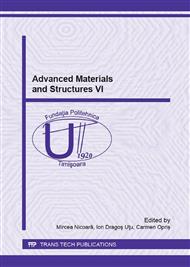p.110
p.116
p.120
p.126
p.132
p.138
p.144
p.149
p.153
Current Technologies and Materials for Dental Fixed Prosthetic Restorations
Abstract:
The aim of this paper is to present the manufacturing technologies for fixed prosthetic restorations frameworks as well as the materials suitable for these applications.For fixed prosthetic restorations frameworks the most used materials at present are Co-Cr alloys and zirconia.Co-Cr dental alloys have been used, mainly for removable partial dentures, for many years. Recently they began to be used more and more for fixed prosthodontics as well, because they do not develop the high allergenic response as Ni based alloys and are not as difficult to manipulate as titanium.Zirconia is used for frameworks manufactured by CAD/CAM milling and it has certain advantages when compared to Co-Cr dental alloys: esthetics, resistance, mechanical properties, biocompatibility, resistance to corrosion, weight but it’s much more expensive.The practitioner has certain options for fixed prosthodontics frameworks manufacturing and the final choice should be made according to the particularities of each case.
Info:
Periodical:
Pages:
132-137
Citation:
Online since:
August 2016
Authors:
Keywords:
Price:
Сopyright:
© 2016 Trans Tech Publications Ltd. All Rights Reserved
Share:
Citation:


